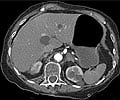Kids who are at high risk of being mistreated at home, who live in poverty or have parents who use drugs or have mental health problems are more likely to start smoking, stated study.

‘Physical abuse of children in high-risk homes, especially when they’re toddlers or teens, dramatically increases the odds that their adolescent experimentation with cigarettes will lead to a heavy smoking habit. ’





The study examined data on children who were at high risk for abuse and neglect – either because they had been referred to a child protective service or lived in conditions associated with the likelihood of maltreatment, or both. “I wanted to look at different types of maltreatment and whether they have an impact on cigarette smoking,” said lead author Susan Yoon, assistant professor of social work at The Ohio State University. “There’s also the impact of timing – it’s not just maltreatment, yes or no. When did it happen, and does that matter with regard to outcomes?”
The study is published online in the journal Substance Use and Misuse.
Yoon noted that substance abuse research doesn’t often take cigarette smoking into consideration despite its significant damaging effects on health.
“Adolescent cigarette smoking is a really serious social problem and public health concern. Brain development is not complete until late adolescence or during young adulthood, and cigarette smoking is associated with damage in brain development,” Yoon said. “We also know that those who start smoking cigarettes during adolescence are more likely to continue smoking into adulthood.”
Advertisement
A breakdown of different types of abuse and neglect experienced by the sample population during three different time periods (early childhood, school age and adolescence) confirmed how vulnerable these kids were. Almost a quarter had been neglected during early childhood and their school-age years, and 19 percent reported school-age physical abuse. Almost half lived in poverty and 58 percent lived in households in which family members smoked cigarettes.
Advertisement
“It was almost shocking how the pattern of cigarette use over time went up so drastically in the sharply increasing use class,” Yoon said. “They were pretty similar to the others at age 12 – almost 80 percent didn’t smoke. At age 16, we saw that almost 60 percent had used cigarettes more than 20 days in the past year and by 18, every single kid in this group reported heavy use of cigarettes.”
A statistical analysis showed that adolescents who experienced early childhood physical abuse were 2.3 times more likely to be in the sharply increasing cigarette use group compared with the stable no/low group. Physical abuse during adolescence had an even stronger effect – this type of mistreatment at that point in life was linked to 3.7 times higher odds for sharply increased cigarette use.
Adolescents who had been neglected during early childhood were 1.89 times more likely to be in the gradually increasing cigarette use group than in the stable no/low use group. Neglect can include a lack of appropriate supervision and failure to meet kids’ needs – ranging from food and clothing to medical needs and education.
About 40 percent of these smokers had reported using cigarettes at age 16, and by age 18, more than 80 percent were smokers, and about 40 percent had smoked on more than 20 days in the previous year.
The analysis also measured the potential effects of sexual abuse and emotional abuse on cigarette use, but neither was a predictor of an increase in smoking.
“The different types of maltreatment predicted different patterns of cigarette use, but the timing mattered as well. It was early childhood and adolescence that appear to be really sensitive periods in which maltreatment influences these outcomes,” Yoon said.
The results suggest efforts to prevent smoking by teens at risk of maltreatment – and especially children experiencing physical abuse and neglect – should start before age 12, she said.
“If we intervene too late, it’s likely they’ve already started using cigarettes and are in the process of using more cigarettes,” Yoon said. “We know from our studies that these kids experiencing physical abuse and neglect are at much higher risk of showing this poor pattern of cigarette use over time. We should be targeting this high-risk group for cigarette use prevention and intervention.”
Source-Newswise















